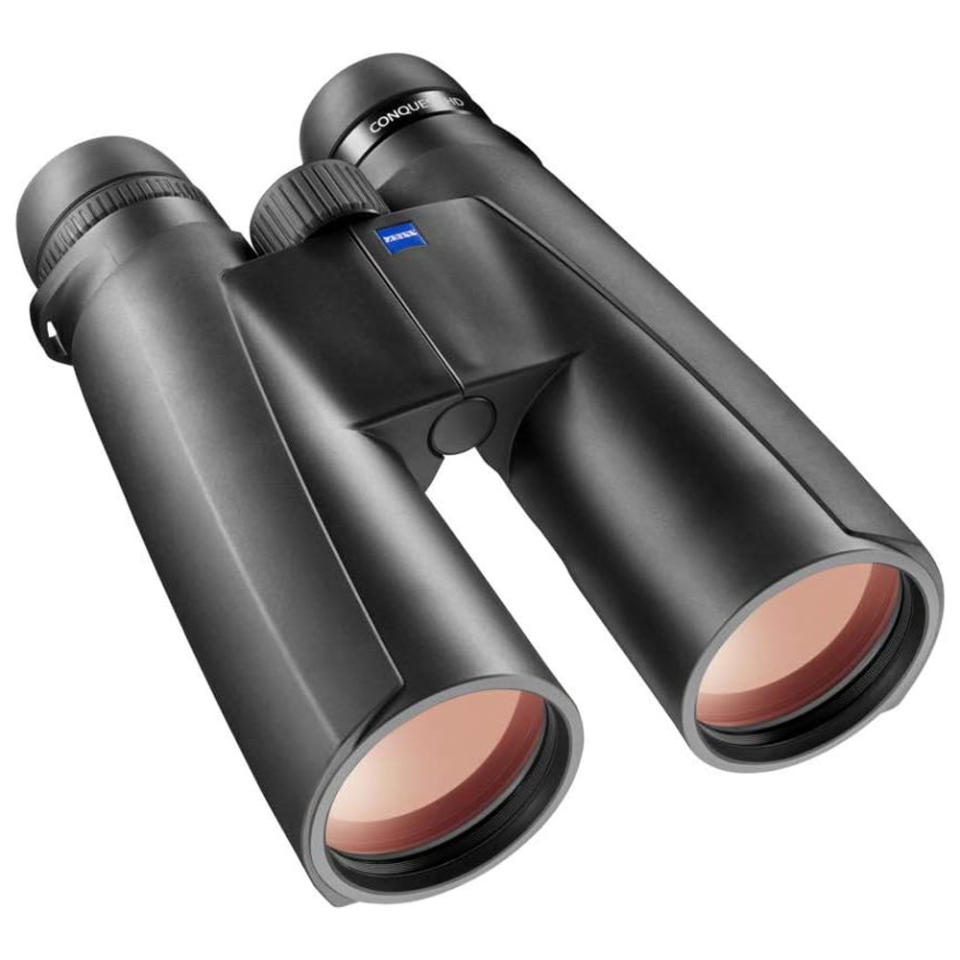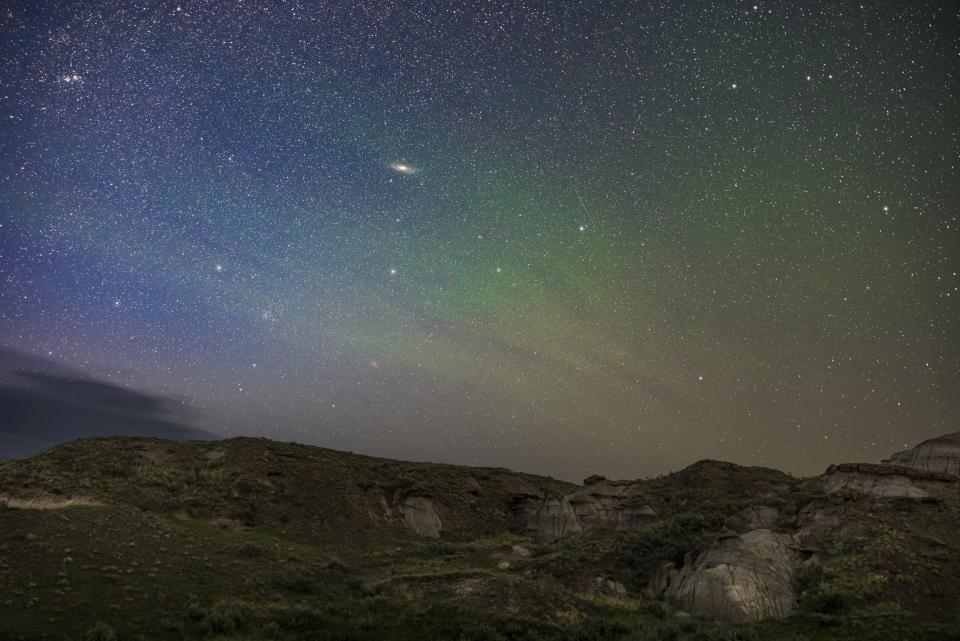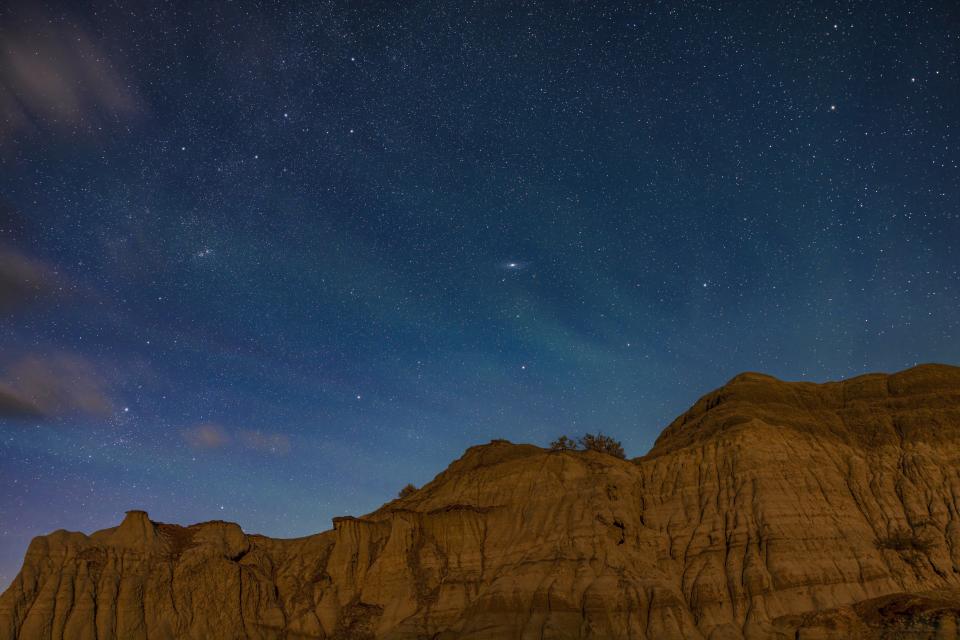“In 1976, Janet and I signed up for an ‘astronomy cruise’ to Bermuda. One evening we were on deck where Fred Hess, a planetarium expert, pointed out the star patterns visible to the naked eye. Janet used her binoculars to look at the stars the objects described, and the highlight came when we saw the Andromeda Galaxy for the first time. Had the cruise ended at that point we would have had our money’s worth.”
— Isaac Asimov, from “In Joy Still Felt” (Doubleday & Company, 1980)
There was a good reason why famed science writer Isaac Asimov and his wife Janet were exuberant that night at sea. Because they had just looked for the first time at the most distant object visible to the naked eye: the Andromeda Galaxy.
And this week, now that the bright moon has left our evening sky, you too will have the chance to see this most amazing deep-sky object, which will pass almost directly overhead between 7:30 PM and 8:00 PM local time.
Related: Night sky, November 2023: What you can see tonight [maps]
Where should you look?
BEST BINOCULARS

Check out our guide to the best binoculars of 2023 to help you find the right optics for viewing the Andromeda Galaxy or anything else in the night sky.
To find the Andromeda Galaxy, you must first locate the Great Square of Pegasus, a landmark in the autumn sky. Then focus the binoculars on the bright star Alpheratz, which is located in the upper left corner of the square. Then continue straight east (left) and make sure the star Mirach (in Andromeda) is in your field of view. From there, slowly ascend to a fairly bright star above Mirach and continue running upward in the same direction until you find the “little cloud” that Al-Sufi described more than a millennium ago.
That will be your stopover, because you will have found the Andromeda Galaxy.
If you’re not familiar with these stars or the Pegasus constellation, you can always use a stargazing app to help you find the Andromeda Galaxy – but put the phone away Once you’ve located it, let your eyes adjust to the dark night sky so they can absorb as much light as possible from this distant star city.
Remember, the Asimovs had the advantage of being aboard a ship in the middle of the Atlantic Ocean when they made their Andromeda Galaxy observation; not much to worry about light pollution out there! But to see it you need good eyesight and a dark, crystal clear night with no street or house lights nearby.
To the naked eye it appears as nothing more than an indefinite, mysterious glow; a diffuse elongated cloud, perhaps two or three times the apparent width of the moon.
The “little cloud”
The Andromeda Galaxy was probably first noticed by the Persian astronomer Abd-al-Rahman Al-Sufi, who described it as a ‘little cloud’ in 964 AD in his ‘Book of Fixed Stars’. But it may also have been known to Persian astronomers. in what is now Iran as early as 905 AD, or even earlier. An expert on star nomenclature, Richard Hinckley Allen, once reported that this star also appeared on a Dutch star map from the year 1500.
Galileo’s rival, Simon Marius, is usually credited with the first telescopic observation of this object in December 1612. He described the nebula as an indefinite glow “like a candle shining through the horn window of a lantern.”


A great city of stars
Even today, binoculars and telescopes reveal this ‘cloud’ as little more than a smooth oval haze, gradually brightening into a star-like core at the center. While it will certainly look bigger and brighter than with your eyes alone, there is little to suggest the grandeur of this object as it is often shown in long exposure observatory photographs. It is oval because from our vantage point we view it not far from the edge, but in fact it is an almost circular, flat, spiral collection of star clouds.
The light from that ‘cloud’ is actually the total accumulation of light from approximately one trillion (1,000,000,000,000) stars. It is listed as Messier (“M”) 31 in Charles Messier’s famous catalog: fuzzy objects that look like comets, but later turned out to be galaxies, nebulae and star clusters.
Here is the most distant object that can be seen with the naked eye. It is estimated that M31 has a diameter of almost 200,000 light-years, or one and a half times as wide as our own Milky Way Galaxy. The bright core is the blurry spot visible to the naked eye.
Like our own galaxy, M31 has several companion satellite galaxies. Two of these: M32 and M110 can be distinguished at low magnification in a small to medium telescope, in the same field of view as M31. There are two other smaller companions (NGC 147 and 185), which are much fainter and located much further away, close to the border of nearby Cassiopeia.
Starlight that has come a long way
When you look at the Andromeda Galaxy tonight you are doing something that no one else in the world, except a stargazer, can do; you are actually looking back into the distant past.
There is a very good reason that this spot of light appears so faint to the naked eye. When you see it tonight, remember that this light has traveled some 2,500,000 years to reach you, all the while traveling at a tremendous speed of 671 million miles (1.08 billion km) per hour. The light you see is approximately 25,000 centuries old and began its journey around the time of the dawn of human consciousness. The light you get now is at least 480 times older than the pyramids; the distance it has traveled is so unimaginable that even writing down the number of miles seems virtually meaningless.
When it began its nearly fifteen billion (15,000,000,000,000,000,000) mile journey to Earth, mastodons and sabre-tooth tigers roamed much of pre-Ice Age North America, and prehistoric humans struggled to exist. in what is now the Olduvai Gorge of East Africa. .
And this is actually just a neighbor of ours. Using the observatory’s large telescopes, we observed galaxies more than a billion light-years away, or more than 400 times farther than Andromeda!
Then consider the galaxies that the James Webb Space Telescope is currently detecting. The light left some of them more than thirteen billion years ago, within just a few hundred million years after the Big Bang.


Cosmic collisions of the past… and the future
RELATED STORIES:
– Andromeda Galaxy: Facts about our nearest galactic neighbor
— The crash of the Andromeda galaxy caused a massive galactic migration 2 billion years ago
– Galactic archeology reveals that the Milky Way’s neighbor Andromeda has a violent past
Recent studies indicate that about six billion years ago the Andromeda Galaxy was breached by another large spiral galaxy. After several billion years, this invader orbited Andromeda, eventually crashing into its core and causing it to expand. Andromeda’s satellite galaxy, M32 – a small, compact elliptical galaxy – is believed to be the core of the renegade galaxy that collided with Andromeda. Initially, it itself was probably a spiral galaxy, its arms stripped by Andromeda’s gravity.
Interestingly, Andromeda is approaching our own Milky Way Galaxy at a speed of 186,411 miles per second (300 km/s) and a galactic collision between the two is now expected to occur in about 4.5 billion years. Based on current calculations, there is a 50% chance that in such a merged galaxy, our Solar System will be swept away three times further from the galactic core than its current distance. There is also a 12% chance that the solar system will be ejected from the newly merged galaxy at some point during the collision.
This is all a moot point as far as life on Earth is concerned. In about 0.5 to 1.5 billion years, the Sun’s brightness will have increased by 35% to 40%, likely causing a runaway greenhouse effect on our planet. As a result, the Earth’s surface will have already become far too hot for liquid water to exist, ending all life on Earth by the time the two galaxies collide.
Joe Rao is an instructor and guest lecturer in New York Hayden Planetarium. He prescribes on astronomy Natural history magazinethe Farmer’s almanac and other publications.